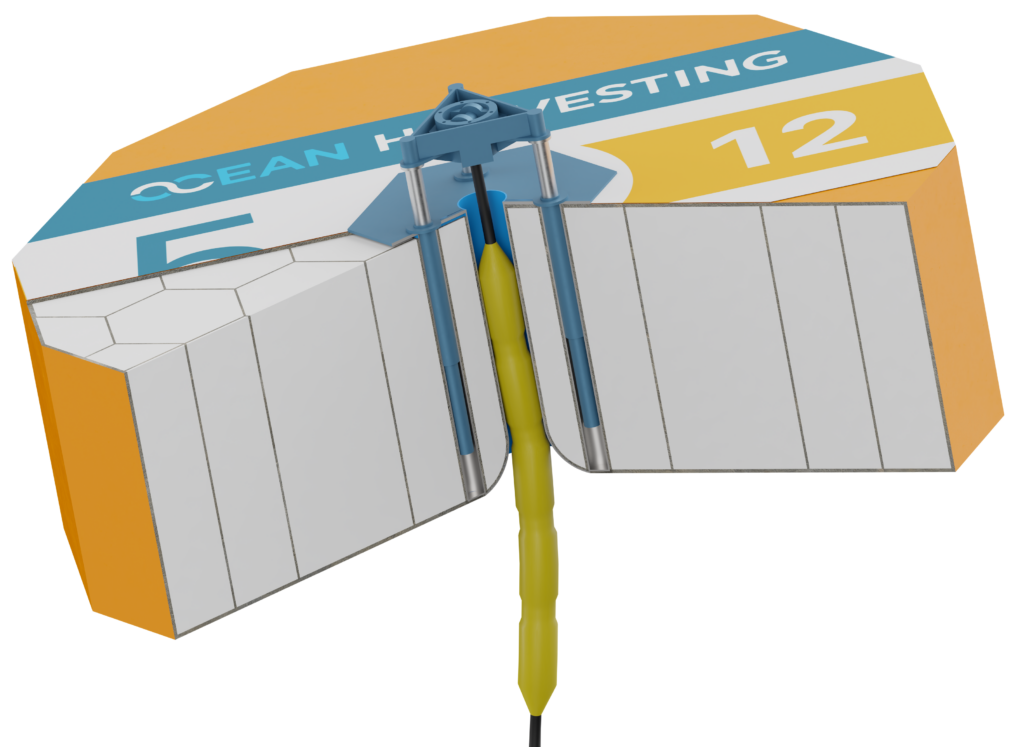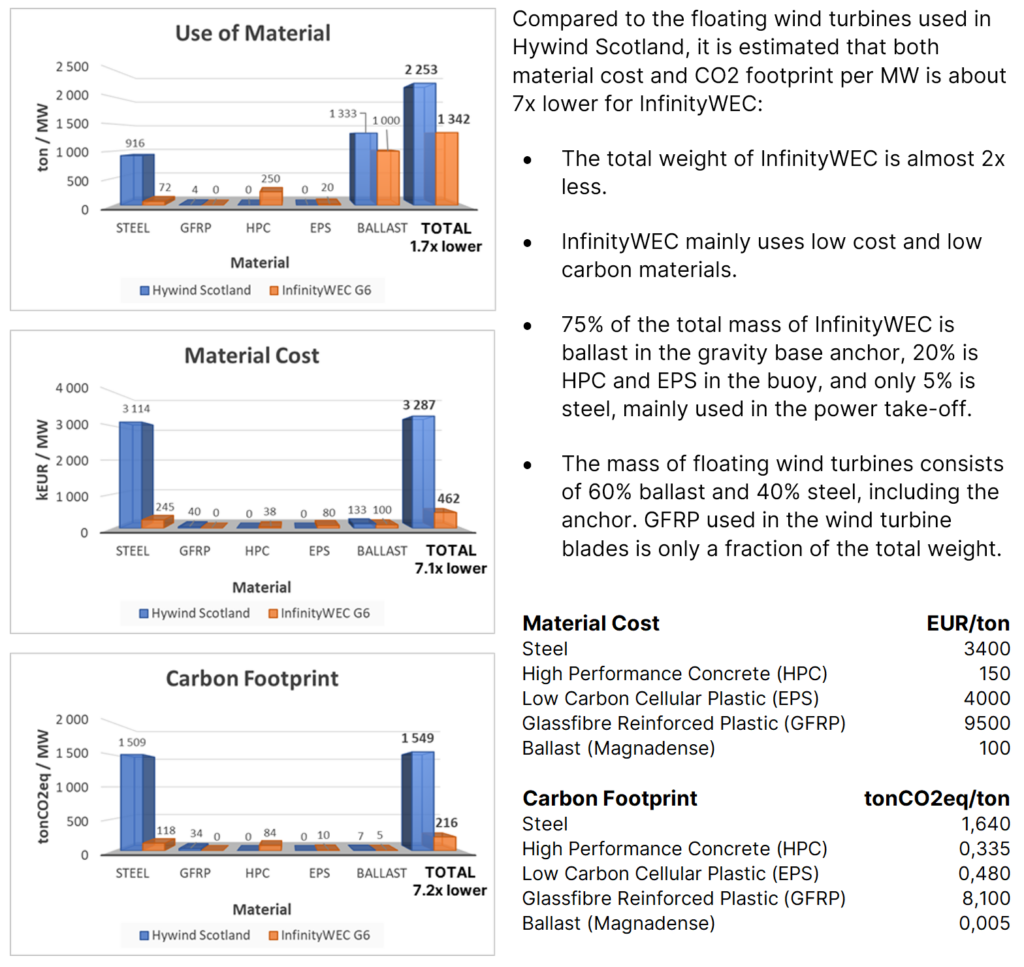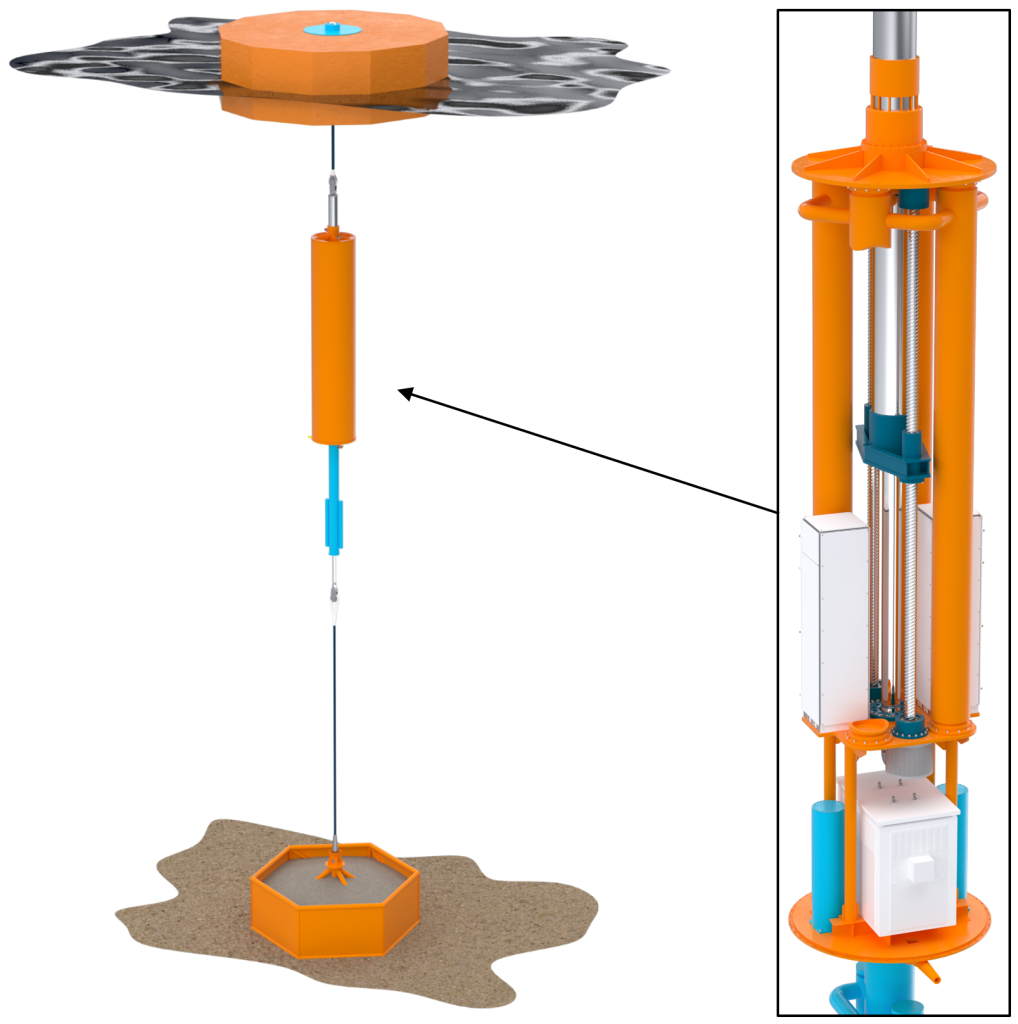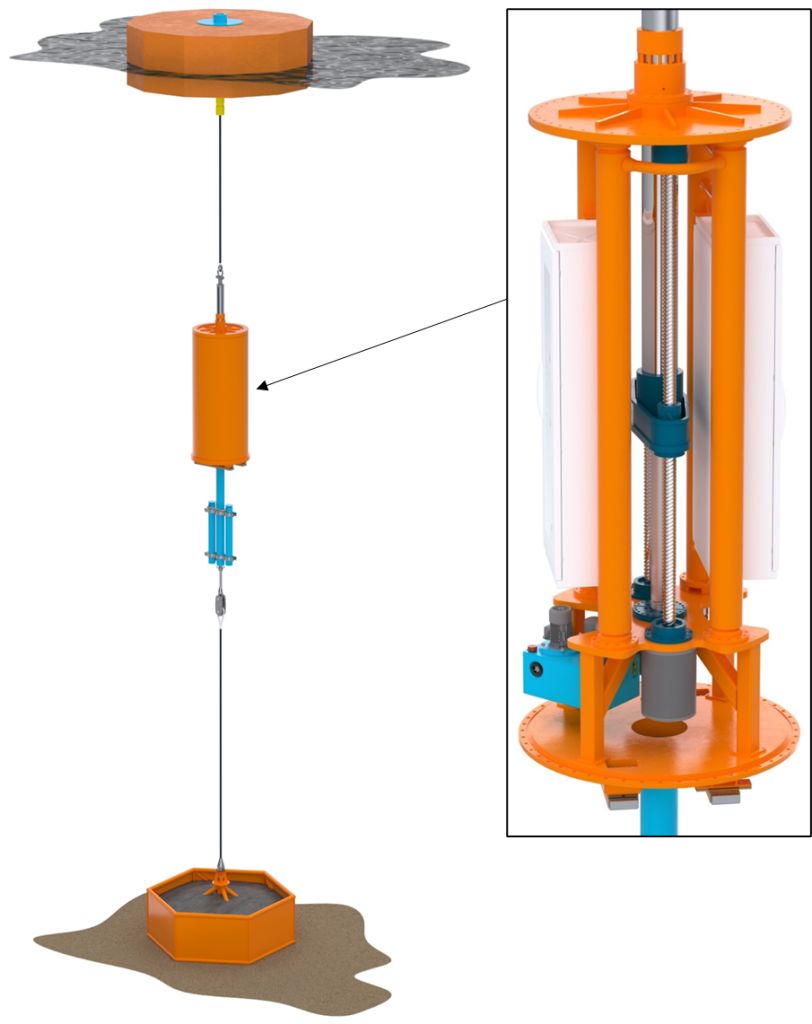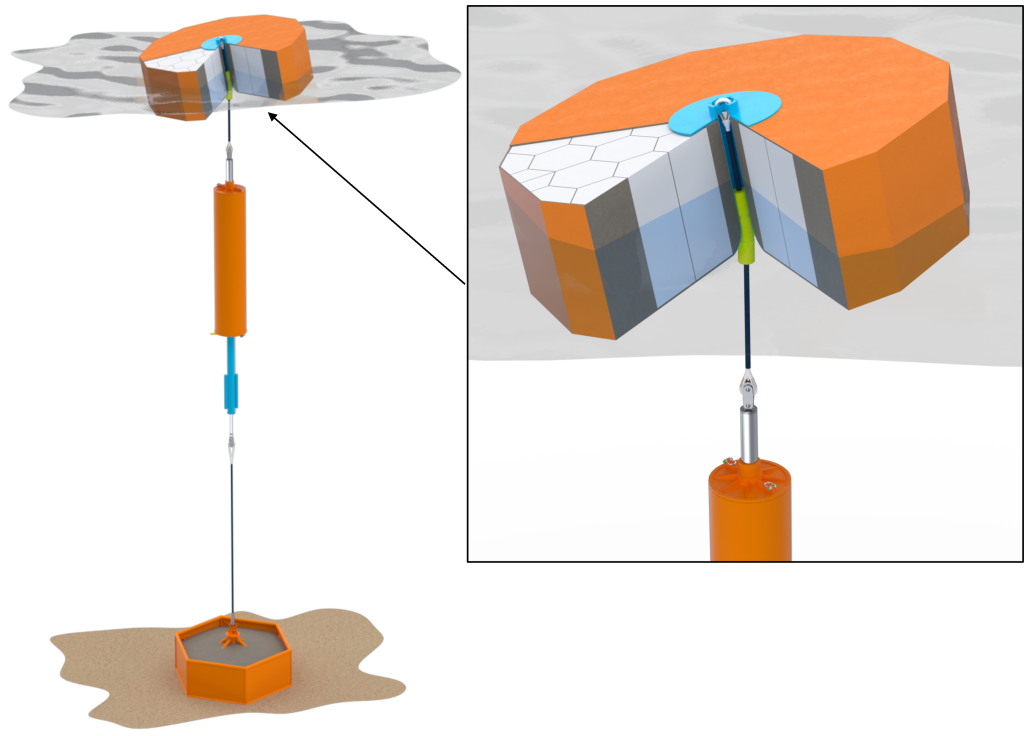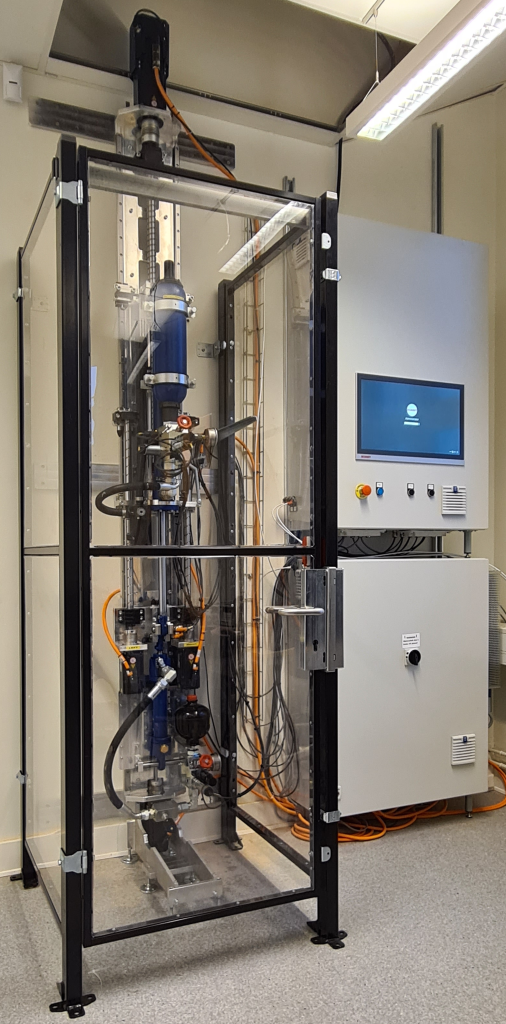Ocean Harvesting is currently developing generation 6 of its wave energy converter InfinityWEC in close collaboration with ball screw manufacturer NSK. A ball screw is a very good actuator providing a high ratio between linear motion and rotation to the generator, high efficiency, low weight and long life. However, ball screws are sensitive to the side forces and bending moments in the PTO caused by the surge motion of the buoy and high speeds that may occur in large waves. This challenge in the design of the PTO has been solved with a new linear guide system and increased control force.
Ocean Harvesting is now implementing and evaluating a moment-based MPC (model predictive control) in InfinityWECs simulation model, showing significant improvement in energy output and computation time. Due to the increased control force, the velocity and stroke in the system can now be controlled and limited by the MPC, simplifying the design and making the system run more smoothly. The buoy can be pulled down and the PTO locked in contracted state to avoid the highest loads in storm conditions.
“The combination of ball screw actuators with our hydrostatic pre-tension system is a very efficient solution to provide the control force needed in the PTO,” says Mikael Sidenmark, CEO at Ocean Harvesting. “The solution benefits from the use of advanced model predictive control algorithms to optimize the force applied to the buoy in every given moment, resulting in both outstanding annual energy production and the ability to constrain the velocity and stroke in the PTO.”
Mikael Sidenmark continues: “The new design provides very good operating conditions for the ball screws. We have increased from two to four ball screws to achieve 25-year lifetime, thereby also increasing the peak force capacity from 1 to 2 MN, which in combination with the hydrostatic pre-tension provides higher control force than the buoyancy of the buoy.”
Focus in 2024 and early 2025 is the completion of the full-scale system design for InfinityWEC generation 6, implementation of the moment-based MPC algorithm in the control system, and preparation for the 1:3 scale sea trial project planned for 2025-2026.For these activities, Ocean Harvesting is raising 450,000 Euro in a financing round where new investors are invited.
About wave power and Ocean Harvesting:
Wave power is a huge untapped resource of renewable energy that provides more consistent electricity production compared to wind and solar power, and which occurs at different times. This increases the value of produced electricity and reduces the need for energy storage to balance the electrical grid.
Ocean Harvesting has developed the 500kW wave energy converter InfinityWEC since 2017. The main advantages are (i) high annual energy production provided with a breakthrough power take-off (PTO) and (ii) the use of circular materials with low cost and low CO2 footprint. The result is 6 times lower cost of materials and 6 times lower CO2 emissions from the materials used per MW/MWh compared to floating wind power. The technology is developed in collaboration with industrial partners and in joint industry projects.
Download:
